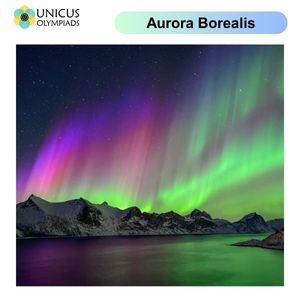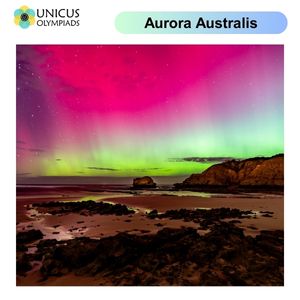

Auroras, also known as the Northern and Southern Lights, are stunning natural light displays in the Earth's sky, primarily seen in high-latitude regions near the Arctic and Antarctic Circles. These mesmerizing light shows have captivated observers for centuries, and they occur due to a fascinating interplay of solar wind, the Earth's magnetic field, and atmospheric gases. In this article, we will explore the science behind auroras, their causes, and why they predominantly appear near the poles.
The primary cause of auroras is the interaction between charged particles from the Sun, known as the solar wind, and the Earth's magnetic field. The solar wind is a constant stream of charged particles (mainly electrons and protons) emitted by the Sun. These particles travel across space and collide with the Earth's magnetosphere, the magnetic field that surrounds our planet.
The Earth’s magnetic field acts as a protective shield, deflecting most of these charged particles. However, near the polar regions, the magnetic field lines converge, allowing some of the particles to enter the Earth’s atmosphere.
As the charged particles from the solar wind collide with the gases in the Earth's atmosphere, primarily oxygen and nitrogen, they transfer energy to these atoms and molecules. This energy causes the atoms to become "excited," meaning that their electrons move to higher energy levels. When the electrons return to their normal, or ground state, they release this excess energy in the form of light. This emitted light creates the beautiful, glowing colors we see as auroras.
Auroras are most commonly visible near the polar regions because the Earth’s magnetic field is strongest at the poles. The magnetic field lines converge at the magnetic poles, which allows charged particles from the solar wind to enter the Earth’s atmosphere more easily. The magnetic field essentially funnels the charged particles toward the poles, leading to more frequent and intense auroras in these areas.
At the poles, the magnetic field lines are more vertical, which means that solar wind particles can travel along the lines and enter the atmosphere. The closer the region is to the magnetic poles, the more likely these particles are to interact with the atmosphere, creating auroras. Conversely, at the equator, the Earth's magnetic field lines are more horizontal, causing the solar wind to be deflected away from the atmosphere and preventing auroras from forming at lower latitudes.
At higher latitudes, the Earth’s magnetic field lines direct the charged particles toward the atmosphere in a more direct manner, making auroras visible. In contrast, closer to the equator, these particles are directed along the magnetic field lines, meaning they do not collide with atmospheric gases in the same way, and thus auroras are not typically visible.
The frequency and intensity of auroras are influenced by solar activity. During periods of high solar activity, such as solar flares or coronal mass ejections (CMEs), the Sun emits an increased number of charged particles. This heightened activity leads to more intense auroras, which can even be visible at lower latitudes than usual.
The Aurora Borealis, or Northern Lights, is the aurora visible in the northern hemisphere. It is most commonly seen in regions near the Arctic Circle, including parts of Canada, Alaska, Norway, Sweden, and Finland.

The Aurora Australis, or Southern Lights, is the counterpart to the Aurora Borealis and can be seen in the southern hemisphere. It is visible in regions near the Antarctic Circle, particularly in places like Tasmania, New Zealand, and southern parts of Australia.
